The Chaco Culture was a sophisticated society that flourished in the Four Corners region from about 1700 to 500 years before the present. No definite epithet can be ascribed to the people of that society, so they are most often referred to as The Ancestral Puebloan People
. Like the Chaco Culture itself, which was spread over a wide area of the Southwest, the Chaco Culture World Heritage Site consists of ten separate archeological sites located in northwestern New Mexico. I was able to visit two of these locations.
The distinctive feature of that society that remains for us today, are the remnants of their Great Houses, an impressive style of early urban design. These houses were actually self-contained settlements, usually built in a D-shaped pattern, constructed from stone and wood. The outer ring consisted of a series of connected one-to-three-story-tall rooms, somewhat resembling a modern apartment building. The remainder of the Great House usually consisted of an open plaza, and one, or frequently more than one, Kiva, a circular multi-purpose building that served as the heart of the community.
I had not realized when I planned my route, that I would pass close by one of the secondary locations of this WHS, namely Aztec Ruins National Monument, located within the limits of the relatively pleasant modern town of Aztec, N.M. (the word Aztec
in both instances is a lingering misnomer.) So, it was an easy choice to add a visit to this Monument, which provided a nice introduction to the site as a whole. There are the remnants of one Great House at that location, generally in reasonable condition. What is unique about that park, is the fully reconstructed main Kiva, which was completed in the 1920’s shortly after the site itself was first excavated. While such reconstructions may not always be entirely accurate, the interior of this Kiva, which appears below, provides a fascinating glimpse of how daily life in that society may have played out.
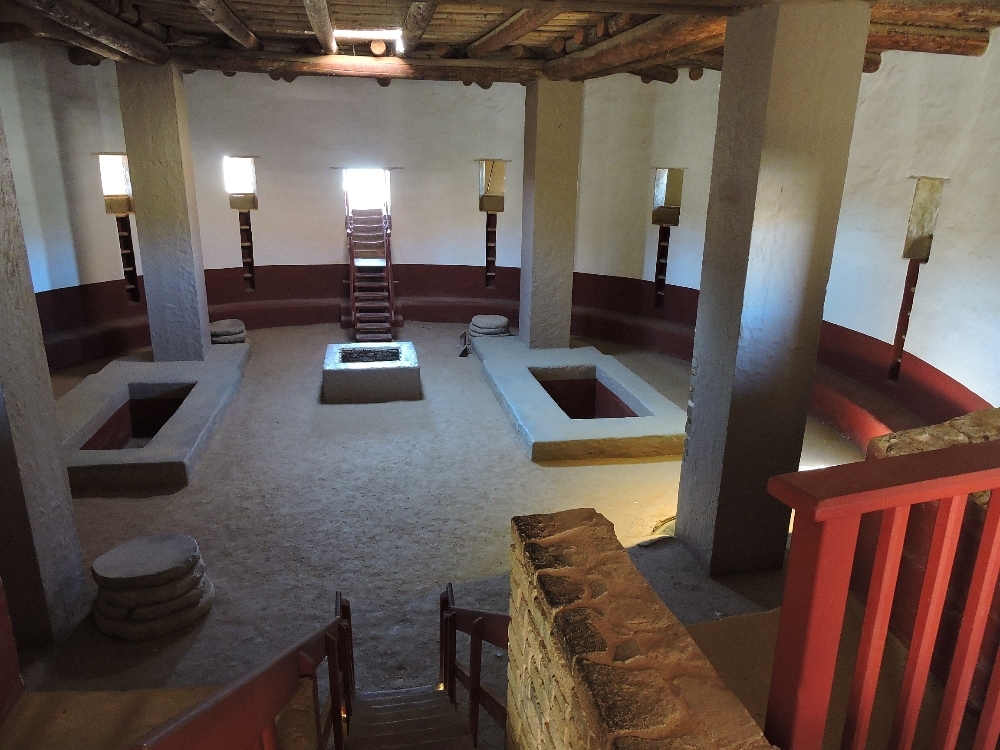
What New York, London, or Tokyo are to their respective modern nations today, the collection of Great Houses in Chaco Canyon National Historical Park were to the greater Chacoan community in its heyday. Consequently, this is the section of the WHS that everyone wants to visit, though it is not particularly easy to do so, especially if you are cycling. The park is located in a quite remote part of New Mexico, and there are no lodging or food options within its boundary, with almost nothings else nearby as well. The main highway through the area, US 550 is in reasonable condition, but its relatively high amount of high-speed traffic and the fairly uniform appearance of the surrounding landscape made for some rather tedious riding. The turn-off onto the Park access road brings another 30 km of travel, one third of which is nice pavement, another third tolerable gravel, and the final section an unmaintained slog over a rutted and corrugated dirt surface.
However, once you reach the Park and its small Visitor Center, conditions improve dramatically. Most of the main ruins sites are reached by a 15-km-long loop road through Chaco Canyon that is one lane, flat, and with light traffic (at least it was when I visited in early spring.)
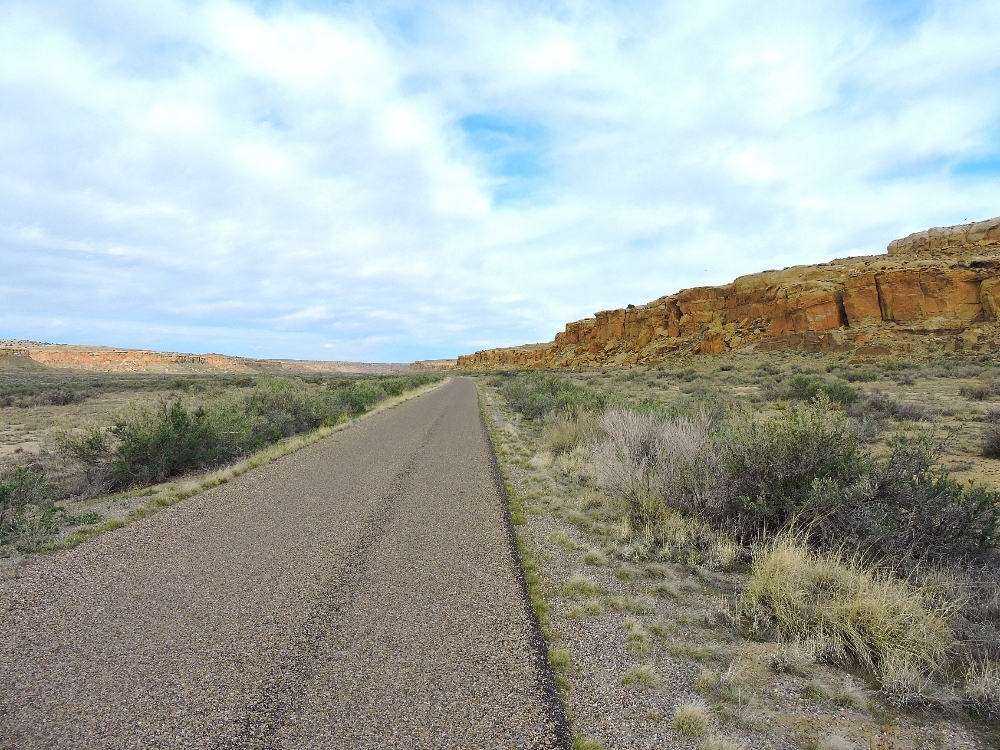
Most of the archeological sites are reachable by short walks from this road, and a representative selection of all the major sites can easily be visited in a day. The images below, taken in Pueblo Bonito, the largest of the Great Houses, give an impression of what remains of the houses today, but only a pale shadow of what they must have been like in their prime.
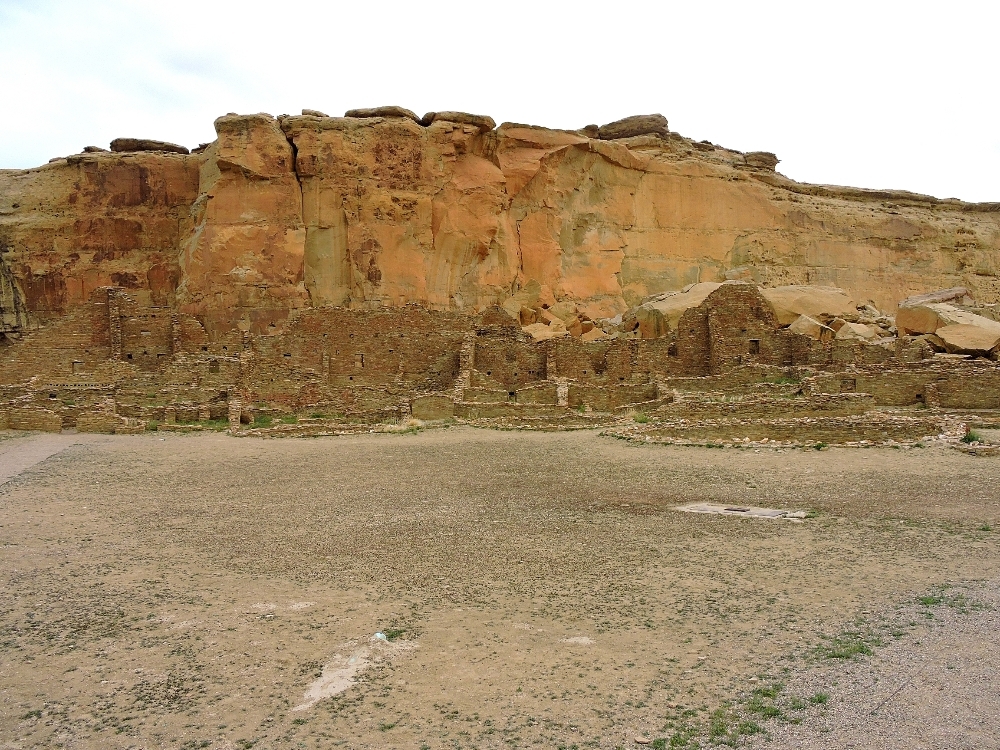
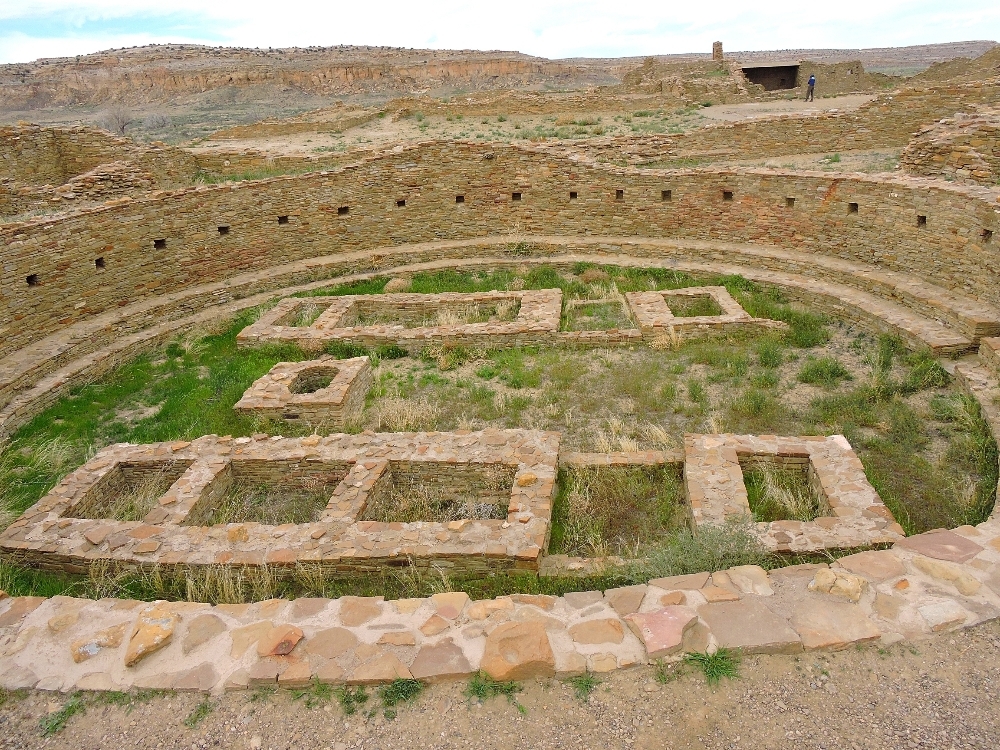
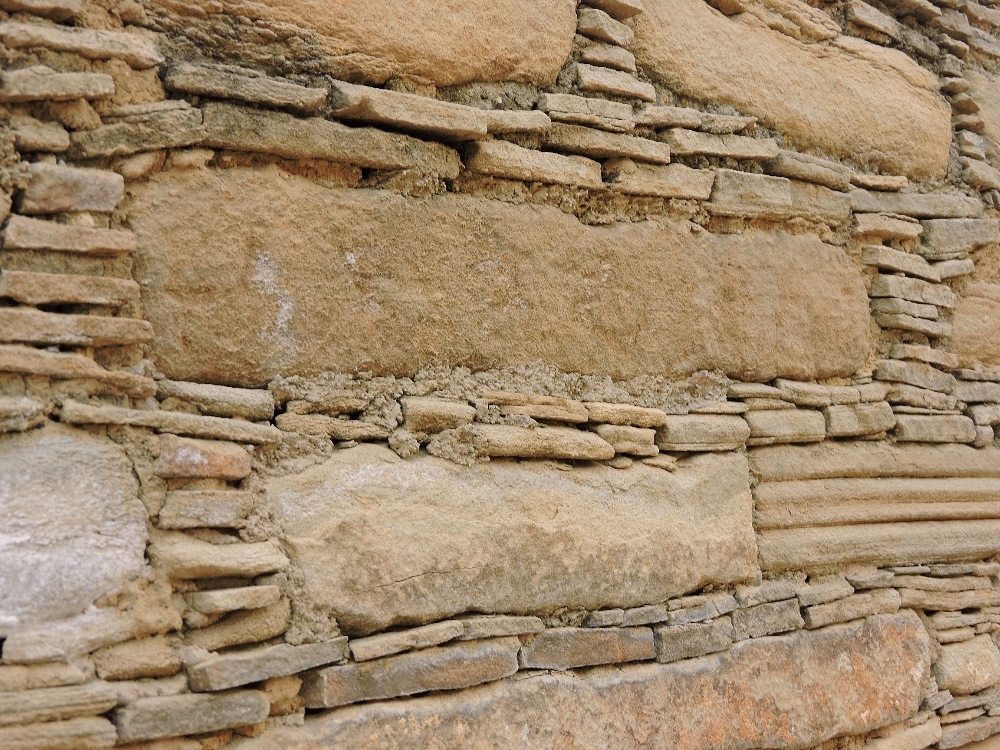
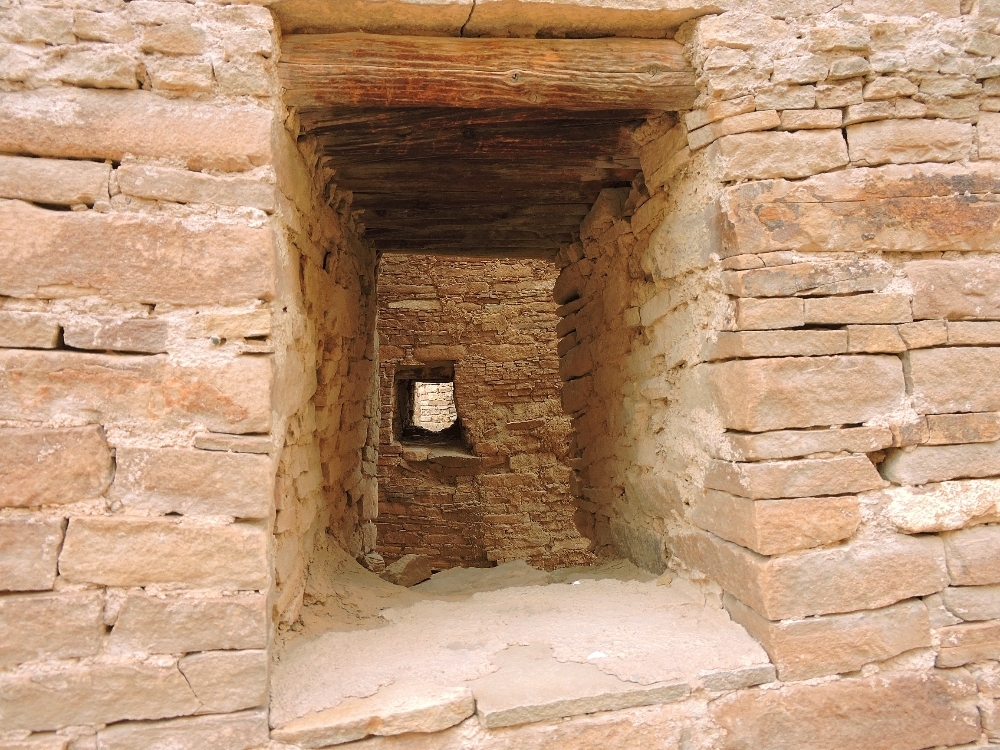
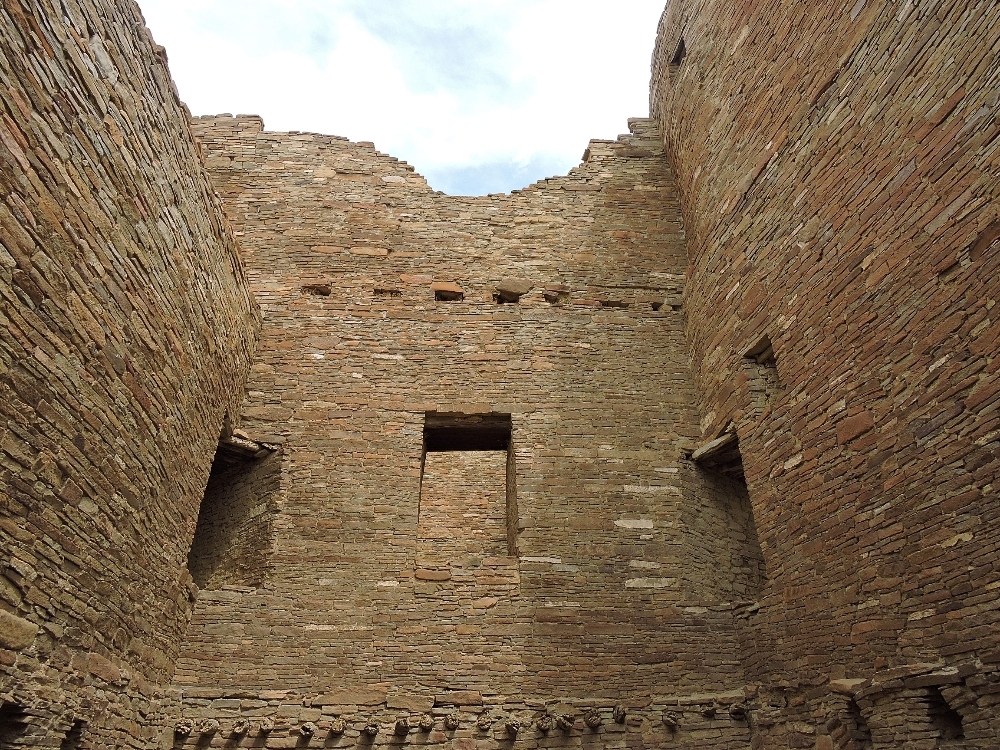
There are also a variety of rock-art galleries associated with the Houses, a feature that always attracts my attention. Most are Petroglyphs, like the ones depicting animals below, though if one goes a little farther off the main circuit, it is possible to see a few Pictographs as well. In more than one instance, these are one of my favorite types: hand prints.
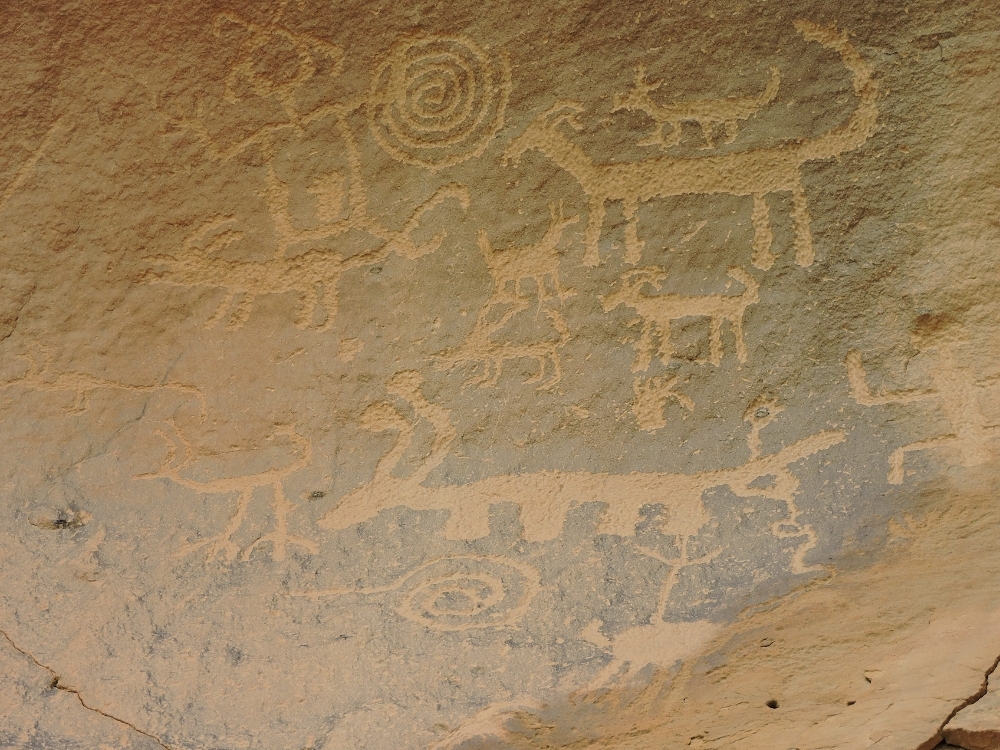
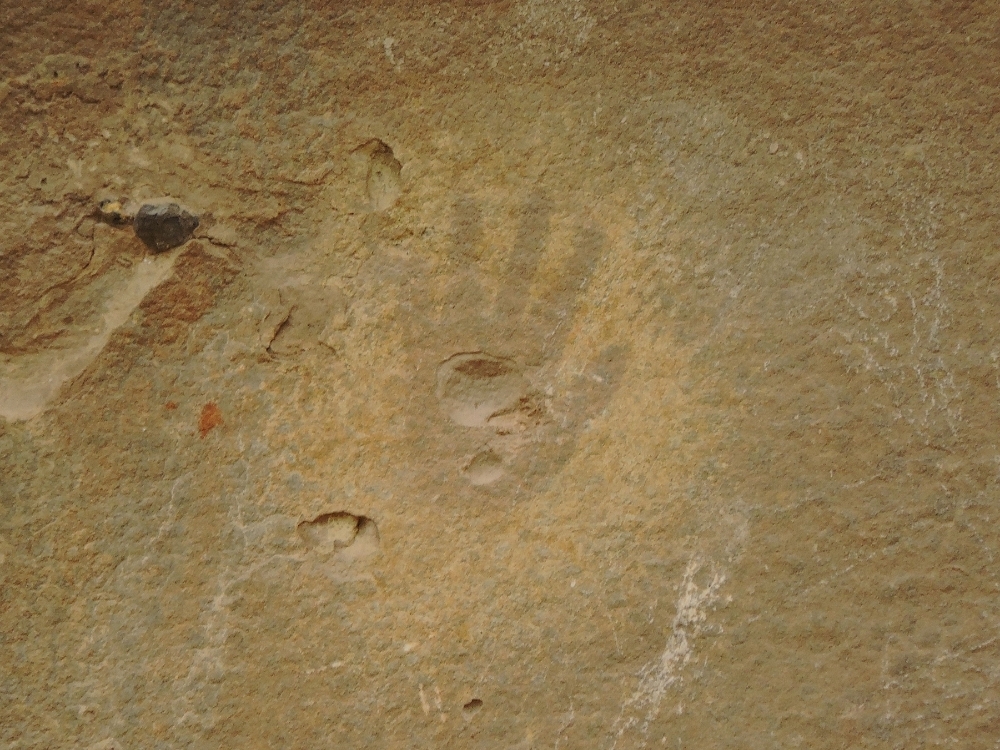
The two aspects of this Cultural site that impressed me the most were the stone masonry, which is every bit as good as some of the more famous sites in Meso- and South America, and the overall urban design of the Houses. I think that I would have enjoyed living in one of these communities when they were in their prime. Well, perhaps more so if the doors were just a little bit taller. Overall, Chaco Culture is an excellent WHS, and my visit was a highlight of the Tour so far.